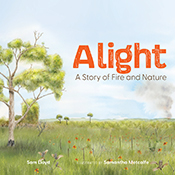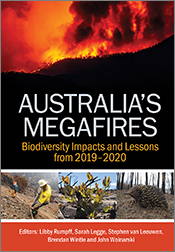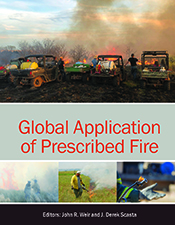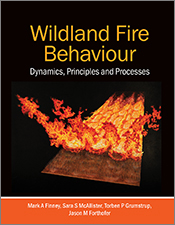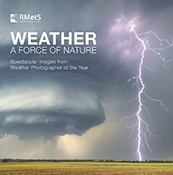Forest Phoenix

How a Great Forest Recovers After Wildfire
By: David Lindenmayer, David Blair, Lachlan McBurney, Sam BanksThe moving story of ecological forest recovery in the wet forests of Victoria following February 2009 wildfires.
This book tells the story of ecological forest recovery in the wet forests of Victoria following major wildfires in February 2009. It also focuses on the science of ecological recovery – a major body of information that is not well known or understood by the vast majority of Australians and the vast majority of environmental policy makers. + Full description
Forest Phoenix presents this important story via short engaging text and truly spectacular images, which are accompanied by highly informative captions.
If you've ever wanted to better understand how forests and forest biodiversity recover after wildfire, then this book is a must-read.
2011 Whitley Award Commendation for Ecological Zoology.
- Short descriptionNews
This title is no longer available in print format.
Reviews
"This is such a good book… In Forest Phoenix the pictures are of consistently high quality and none is wasted. The story each picture tells is amply illuminated by the brief but informative text that accompanies each. Indeed, the book is so lavishly illustrated that it’s close to a ‘coffee table’ format and most determinedly not intimidating for the vast majority of us who are not at the forefront of scientific research (as these authors clearly are).
In summary, this book is unreservedly recommended. It is informative, authoritative, comprehensive, accessible and almost as enjoyable as a ramble through these forests themselves. How useful it would be if all our habitats were introduced and explained with such elegance and simplicity."
David Cheal, The Victorian Naturalist, Vol 128 (4), August 2011, pp. 154-155
"The photographs are of a high standard and by themselves
make the book engaging. But the text written by ecological
researchers working in the area for more than 25 years is
simple, clear and informative about the complexities of fire
effects. Although this book is centred on one geographical
zone, much of what is said is applicable to other fire-prone parts
of the world and makes this book a good present for anyone
who is hazy as to what fire does and doesn't do in a forest."
Peter Thomas, Bulletin of the British Ecological Society 2011, 42:1
"This is a wonderful book. Indeed it is a ‘must-read’ for anyone wanting to understand the relationship between fire and the towering wet forests close to Melbourne. David Lindenmayer and his colleagues have performed a rare feat for a group of scientists: they have put their knowledge into a small book anyone can read with ease." Phil Ingamells, Park Watch, December 2010
"This is an excellent book that I believe provides several elements that would satisfy different readers as well as different perspectives in the one reader. As a professional ecologist I was able to appreciate the scientific information and add to my existing knowledge of fire ecology. As a resident of Victoria who has experienced the forest and the fires I gained a deeper appreciation of the drama of the fire itself and the recovery of the vegetation and wildlife.
Lincoln Kern, Australasian Plant Conservation, Vol. 19, No. 3, December 2010 - February 2011
"An important and beautiful publication."
Ian Fraser, Natural History Book Reviews, http://www.botanicalbookshop.com.au/reviews.asp
Details
ePDF | September 2010ISBN: 9780643101036
Publisher: CSIRO Publishing
Available from eRetailers
Features
- Simple but highly informative text
- Stunningly beautiful images
- The story of February 2009 will resonate with all Victorians
- Focuses on the wet ash or montane ash forests of the Central Highlands of Victoria
Contents
PrefaceAcknowledgments
Chapter 1: A forest burning
Chapter 2: After the fire – a forest recovers
Chapter 3: After the fire – the wildlife recovers
Chapter 4: Forest futures
List of scientific names
Further reading
Authors
David Lindenmayer is a Research Professor at the Fenner School of Environment and Society, The Australian National University. He has worked in forest environments since 1983 and has led a research team of many outstanding students and other researchers for much of that time. He has published 28 other books as well as over 585 scientific publications. He has worked on Australian biodiversity and forest and woodland environments for more than 30 years. For his research on forest biodiversity that formed the basis of this book, David was awarded his second Eureka Prize; the 2010 Sherman Eureka Prize for Environmental Research.David Blair is a research officer at the Fenner School of Environment and Society, The Australian National University. Following completion of his degree in Forest Science from the University of Melbourne, he worked as a professional photographer, photographing endangered species in Indonesia and threatened environments around Australia. He then worked as an environmental consultant, writing the weed management strategy for the Shire of Yarra Ranges before beginning with the Fenner School post Black Saturday.
Lachlan McBurney is a senior research officer at the Fenner School of Environment and Society, The Australian National University. He graduated in 2001 from Deakin University with a Bachelor of Environmental Science. He has worked for the Fenner School since 2001, where he manages the Victorian Long Term Monitoring Program in the Central Highlands.
Sam Banks is a research fellow at the Fenner School of Environment and Society, The Australian National University. He completed a PhD in 2005 and has worked for most of his career on the biology and conservation of Australian native marsupials, particularly those of the wonderful tall eucalypt forests of south-eastern Australia.



